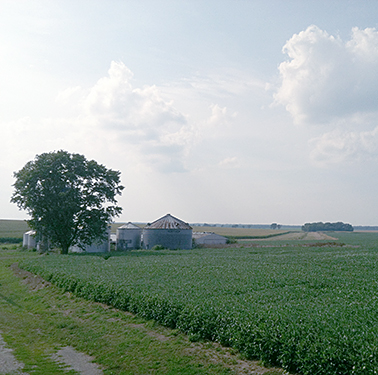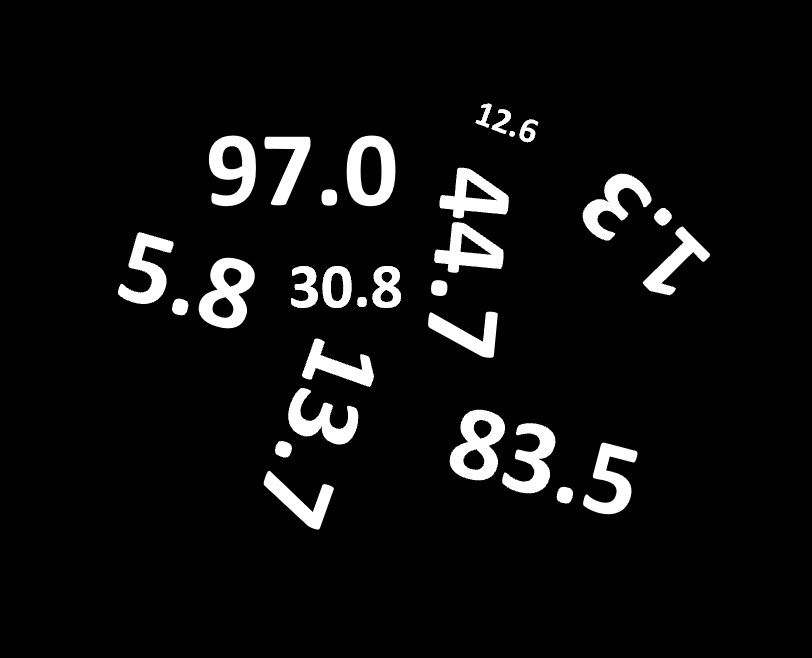THE OPEN
Nov beans: 10 lower
Dec meal; 2.30 lower
Dec soyoil: 52 lower
Dec corn: 2 1/2 lower
Dec wheat: 3 3/4 lower
The markets opened as called but quickly moved lower as funds turned sellers into an open harvest weekend. Most commodities outside grains are also trending weaker, which is making this a macro-sell side.
IHS Market released new acreage estimates based on the latest Farm Service Agency numbers:
- Corn acreage: increasing by 420,000 acres from the USDA's Sep. crop report to 93.7 mln for 2021; production: 15,046 mln bu
- Soybean acreage: increasing by 150,000 acres from the USDA's Sep. crop report to 87.5 mln for 2021; production: 4,381 mln bu
- All wheat acreage for 2022 is projected at 48.5 mln acres, which would be 3.3% above 2021.
SOY
- The USDA reported another sale of 132,000 mt of beans to China, but strength was taken as a selling opportunity as funds once again lightened up on length. Technicians noted the failure of the market to stay over $13.00 in November, which created weakness and a trade back towards trading range lows. The past four days found the bean market with new sales of 4 cargoes to China which just about offset the 5 cancelled cargoes. Because of the Gulf, China continues to purchase higher priced Brazilian beans along with the US.
- Soyoil futures follow a weaker crude oil market, lower palm, and lower canola. The EPA is due to release their biofuel mandate targets for 21/22, with a possible retroactive adjustment to 2020. These headlines have been responsible for market drops in soyoil, and looks like the market is anticipating such again. Buy meal/sell soyoil trade takes Dec oilshare below 45.0% to 44.88%. Dec. crush falls to 85c/bu.
- November beans trades through sell-stops under $12.80 which takes the market back towards the lower end of the trading range, which is a good test of where value is right now for beans. Spreads were wider with Nov/Jan bean carry trading out to 9c, while Nov 21/22 spread trades from 36 1/2c down to 29 3/4c. Dec/March meal trades from $4.60 out to $5.20. At midday prices still lean lower as buyers exercise patience.
GRAINS
- Trading range activity continues, but for the open any strength was taken as a chance to liquidate length heading into an open weekend of harvest. Yields continue to trickle in and they are mostly mixed. December corn prices traded towards key support at $5.20, while December wheat finds weakness to test lower key support at $7.05. Generally, grains were holding up better on the downturn than the soy complex, probably suggesting that new shorts are in the beans. Dec/March corn spread trades from 7 1/4c to 8 1/4c, while Dec 21/Dec 22 trades from 26c down to 21 1/4c.
- Expectations for a large harvest weekend and lack of business keeps the price action pressured, but ranges are still forming in the big picture. Yield discussions continue, which for the most part lend some credibility to the chance that the October crop report may print a decline in corn yields from the higher adjustment in Sep.
- December wheat futures give way to weakness with the rest of the board, as KC dips lower. Winter wheat planting in the plains could make good headway over the weekend, as conditions remain warm and dry there. Dec wheat/corn spread trades from 1.83c to 1.89c.
AT MIDDAY THE MARKETS ARE AS FOLLOWS:
HI LO
Nov beans: 15 lower 12.98 1/2 12.78 1/4
Dec meal: 1.20 lower 344.70 341.20
Dec. soyoil: 100 pts lower 57.05 55.51
Dec corn: 4 lower 5.30 1/2 5.21 3/4
Dec wheat; 4 lower 7.16 7.06 1/2
Nov canola: 10.00 lower 875.50 861.20
OUTSIDE MARKETS
Stocks are quietly trading down 28 pts with crude oil lower down to $71.21/barrel. The US dollar is higher, as traders unwinding prev. buy energies/sell currency, trading up to 93.17.
CLOSING COMMENTS
The 6/10 day and 8-15 day outlook maps remain dry for harvest. Brazil bean planting is underway, and they need the rain, as the next 10 days are going to be dry in the center west. Southern Brazil is in good shape. Think that the next best chance for a good market rally may have to come from a glitch in planting, and an uptick in Chinese demand. Both items are lacking now which did not help the bull cause.
There is still chatter that China is looking at and perhaps purchasing US beans off the PNW. Trade ideas have it that China will buy beans, which they need, and will then turn its attention towards purchasing corn. Right now, harvest pressure and lack of export activity is a weight.
The Sep. quarterly stocks report is at the end of the month. Traders will perhaps begin to position -square into that data.
Crop conditions will be released again on Monday, with harvest updates. Advertised expectations are for conditions to perhaps remain steady, with corn around 7-10% complete. winter wheat plantings should come in around 20%.
Have a good weekend!
TAGS – Feed Grains, North America


 Large supplies and a strong dollar took their toll this week on corn and soybeans, but they still managed to outperform. Weather worries pushed wheat higher for a seventh straight session, and pork finally took a fall. There was high volume trading in corn today but without any strong fee...
Large supplies and a strong dollar took their toll this week on corn and soybeans, but they still managed to outperform. Weather worries pushed wheat higher for a seventh straight session, and pork finally took a fall. There was high volume trading in corn today but without any strong fee...
 The Market Brazil has been winning the soybean export war, and imported biodiesel feedstock threatens domestic crush margins, but Chicago trading this week appeared to shake off such concerns. July soybeans traded lower for the past three trading sessions but larger gains achieved at the beginn...
The Market Brazil has been winning the soybean export war, and imported biodiesel feedstock threatens domestic crush margins, but Chicago trading this week appeared to shake off such concerns. July soybeans traded lower for the past three trading sessions but larger gains achieved at the beginn...
 The Q1 2024 GDP was 1.6 percent, well below the pre-report consensus expectation of 2.4 percent, and down from 3.1 percent in Q1 2023 and 3.4 percent in Q4 2023. That rate was the slowest in almost two years, dating back to Q2 2022. Recall that in the 2 February Ag Perspectives report on...
The Q1 2024 GDP was 1.6 percent, well below the pre-report consensus expectation of 2.4 percent, and down from 3.1 percent in Q1 2023 and 3.4 percent in Q4 2023. That rate was the slowest in almost two years, dating back to Q2 2022. Recall that in the 2 February Ag Perspectives report on...